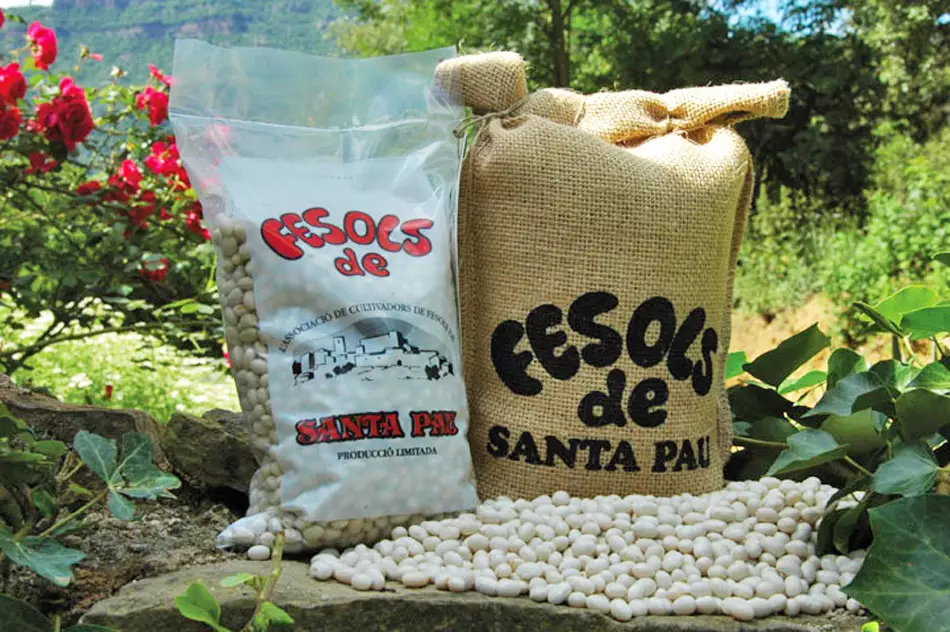Quin pet!
What a blast!
Volcans als Països Catalans?
Volcanoes in the Catalan Countries?
Fa uns dies ens vam llevar amb la notícia de l’evacuació de la població d’Islàndia per l’amenaça imminent de l’erupció d’un dels seus volcans. Ho sabíeu que els catalans també en tenim de volcans? N’hi ha a la Garrotxa, a la Illa Grossa, a les Columbretes, a Cofrentes, a Picassent i al Camp Volcànic de Bunyol. De fet, les aigües termals dels Països Catalans són una atracció turística ben coneguda.
Some weeks ago, we woke up to the news of the evacuation of the population of Iceland due to the imminent threat of the eruption of one of its volcanoes. Did you know that Catalans also have volcanoes? There are some in La Garrotxa, Illa Grossa, Columbretas, Cofrentes, Picassent and Bunyol Volcanic Countryside. The thermal waters of the Catalan Countries are a well-known tourist attraction.
A la Garrotxa, d’un total de 50 cons volcànics, els més coneguts són: el Croscat, el de Santa Margarida, el del Montolivet, el de la Garrinada i el Montsacopa, tots inactius des de fa més de 10000 anys. Però aneu en compte, estudis recents sobre vulcanisme indiquen que el Croscat és el volcà amb més probabilitats de reactivar-se.
In La Garrotxa, out of 50 volcanic cones, the best known are Croscat, Santa Margarida, Montolivet, Garrinada, and Montsacopa, all inactive for over 10,000 years. But be careful! Recent studies on volcanism indicate that Croscat is the volcano most likely to reactivate.

I ara, us demanareu, però hi ha gent vivint en aquesta àrea volcànica? Doncs sí, la vila de Santa Pau s’hi situa al bell mig. Si sou de visita a Girona, atanseu-vos-hi. Aprofiteu per anar al Santuari dels Arcs, conjunt arquitectònic romànic del segle XI, us sorprendrà. Molt a prop de Santa Pau hi ha el monestir benedictí de Sant Joan les Fonts, una meravella romànica del segle XI. També paga la pena fer un volt per la Fageda d’en Jordà, un lloc místic.
El misteri forma part d’aquestes terres on cada any, el primer cap de setmana d’octubre, se celebra la Fira Internacional de Bruixeria de Sant Joan les Fonts. Pels amants de les tradicions, recomanem les festes majors de Begudà, la Canya i Sant Joan les Fonts, i la de Santa Pau.
And now, you may wonder whether people are living in this volcanic area. Yes, the town of Santa Pau is just in the middle. If you are visiting Girona, come here. Take the opportunity to go to the Sanctuary of the Arches, a Romanesque architectural ensemble of the eleventh century. You will be surprised. Very close to Santa Pau is the Benedictine monastery of Sant Joan les Fonts, a Romanesque wonder of the eleventh century. It is also worth strolling through the Fageda d’en Jordà, a mystical place.
The mystery is part of these lands where every year, the first weekend of October, the International Witchcraft Fair of Sant Joan les Fonts is celebrated. For lovers of traditions, we recommend the local festivals of Begudà, La Canya, Sant Joan les Fonts, and Santa Pau.

La terra volcànica és molt fèrtil, per això, la gastronomia garrotxina té productes de gran qualitat com els fesols de Santa Pau o els naps negres. Si sou per la zona, els trobareu al mercat d’Olot i als restaurants de Cuina Volcànica.
I per acabar aquest breu passeig pel vulcanisme català, us deixo amb la llegenda del mantell màgic amb una monja de Sant Joan de les Abadesses com a protagonista, recollida pel nostre folklorista de capçalera, en Joan Amades i Gelats (1890-1959) al Costumari català. Barcelona: Salvat, 1950. Vol. I, p. 592-593. Si la vols sentir, fes un bot al nostre canal de Youtube.
The volcanic land is very fertile, so the gastronomy of Garrotxa has high-quality products such as Santa Pau beans or black turnips. If you are in the area, you will find them in the Olot market and the Volcanic Cuisine restaurants.
And to finish this brief walk through Catalan volcanism, I leave you with the legend of the magic mantle with a nun from Sant Joan de les Abadesses as the protagonist, collected by our head folklorist, Joan Amades i Gelats (1890-1959) in the Catalan Costumari. Barcelona: Salvat, 1950. Vol. I, p. 592-593. If you would like to hear it, hop on our YouTube channel.


Deixa un comentari